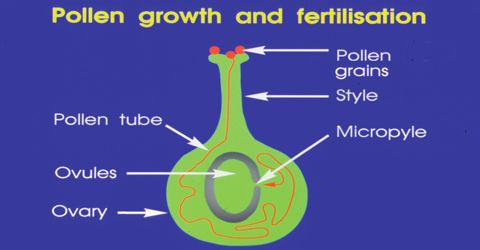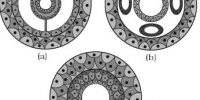Physiology of the growth of pollens:
Formation and development of a pollen tube from a pollen grain is inevitable for fertilization. Male gametes pass to embryo sac through the pollen tube. For the proper development of a pollen tube the formation of pollen tube must occur precisely and successfully. Different enzymes take part in the formation of a pollen tube.
Enzymes evolved in the formation of pollen tube
For the formation of a pollen tube, stigma plans a vital role in creating physical and chemical field.
The factors essential for the formation of a pollen tube are as follows:
- Pollen hydration: The cell materials of a pollen tube are present as dried form. In order to make the cell materials functional the pollen grain absorbs water from stigma and atmosphere and turns to a turgid condition which initiates the formation of a pollen tube through particular germ pore.
- Proper PH: For the formation of a pollen tube the presence of props PH in the stigma is essential. Different PH is essential for different species.
- Essential light: Essential light often helps in the formation of a pullet tube.
- Proper carbohydrate: For the formation and the development of a pollen tubes sucrose is marked as the essential carbohydrate.
- Presence of Boron and Calcium: Boron (B) and Calcium (Ca) play an essential role in the formation and development of a pollen tube.
Entering of pollen tube into micropyle:
After the formation of a pollen tube, gradually, it grows down.
- While growing, the pollen tube gradually reaches to the mule, passing through stigma, style and the tissue of ovary.
- There is a narrow passage to the frontal part of the ovule, called microphyle. Embryo sac is present within the ovul. Egg apparatus within the embryo sac is present close to the meerophyle.
- The pollen tube advances to the placenta passing through the inner wall within the ovary .
For almost all the plants the pollen tube reaches to the ovule through the microphyle. This phenomenon is known as progamy.













